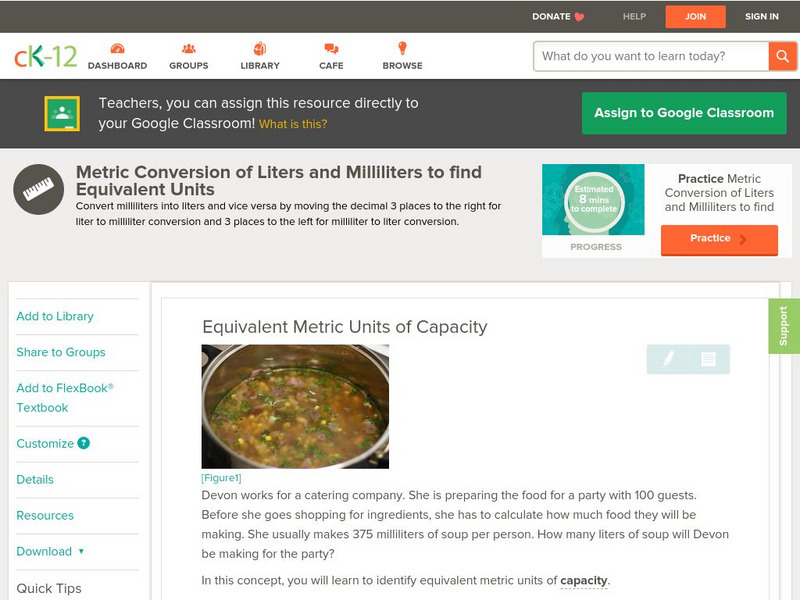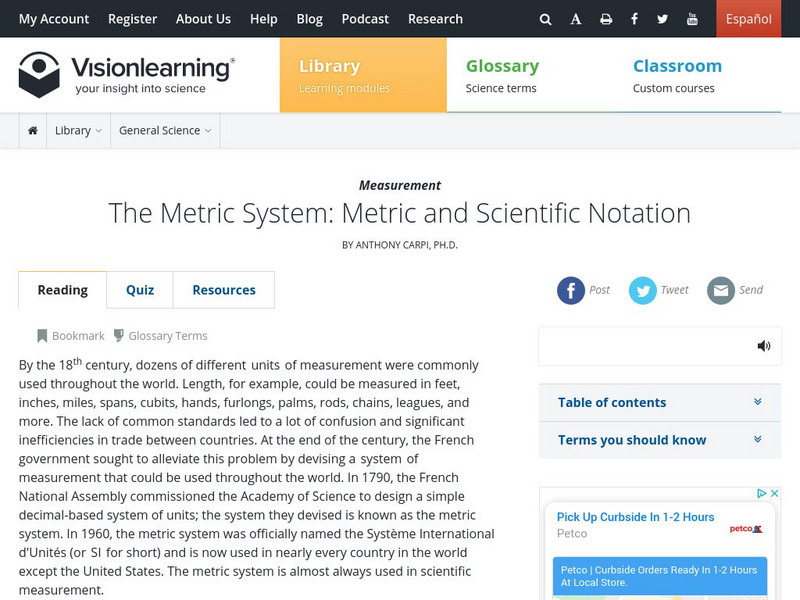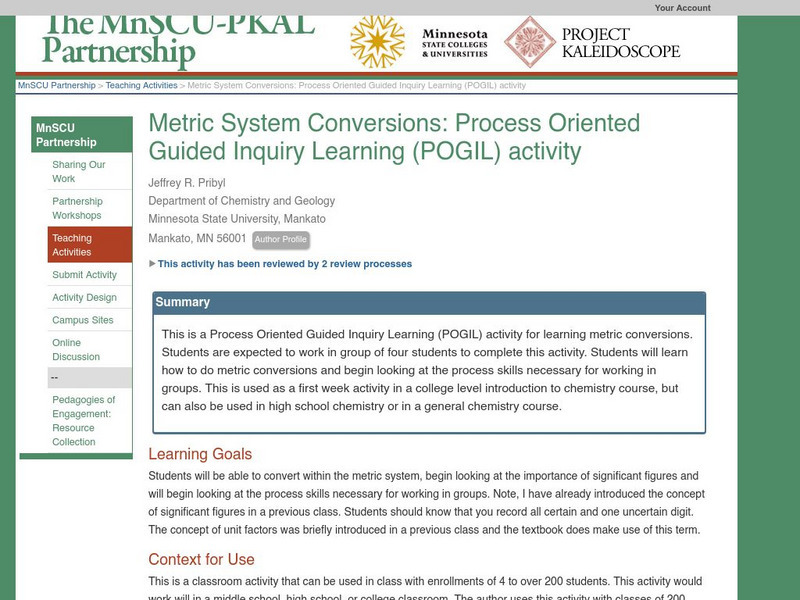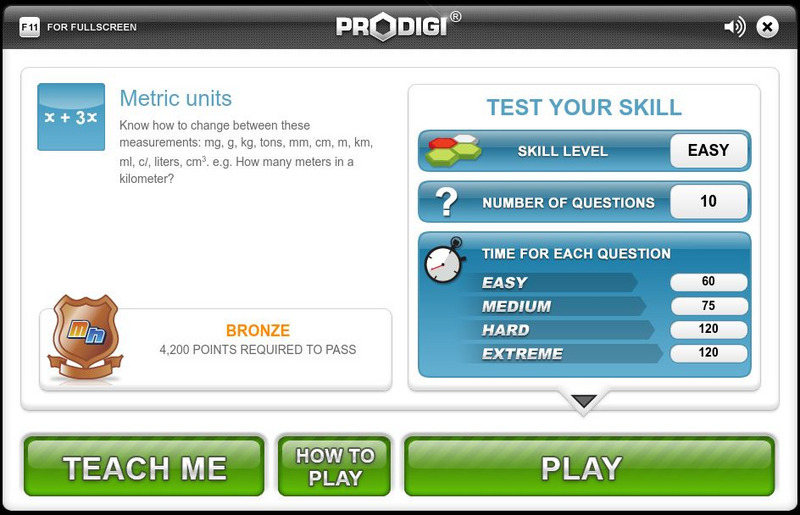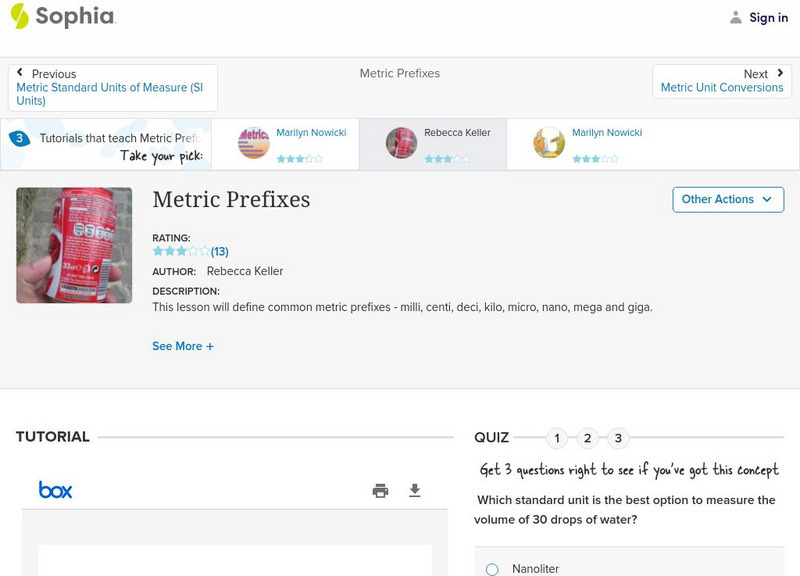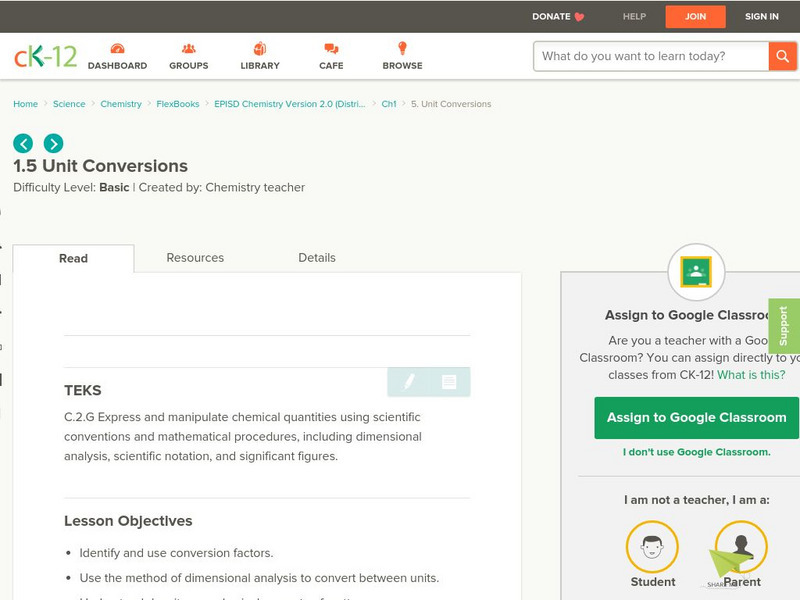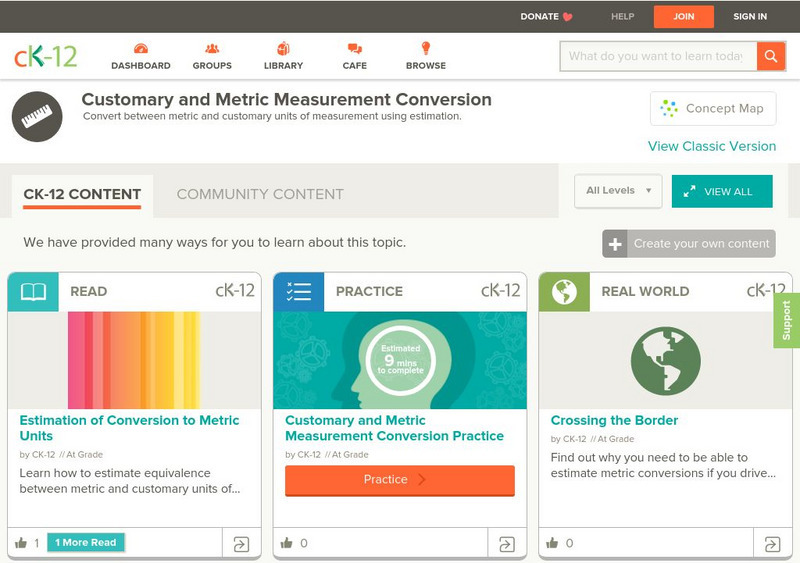Hi, what do you want to do?
CK-12 Foundation
Ck 12: Measurement: Metric Unit Length Conversions
[Free Registration/Login may be required to access all resource tools.] Convert metric units of length and round to a given place value.
CK-12 Foundation
Ck 12: Measurement: Equivalent Metric Units of Capacity
[Free Registration/Login may be required to access all resource tools.] Convert metric units of capacity and identify equivalencies.
CK-12 Foundation
Ck 12: Measurement: Equivalent Metric Units of Mass
[Free Registration/Login may be required to access all resource tools.] Convert metric units of mass and identify equivalencies.
National Council of Teachers of Mathematics
The Math Forum: Intro to Measurement for Primary Students
This site from the Math Forum is a great introduction to measurement for primary students. Each measurement activity has four components: interactive, manipulative-based project; technology; paper/pencil practice; literature connection.
Khan Academy
Khan Academy: Metric Units of Length Review
Metric units of length (millimeters, centimeters, meters, and kilometers) are reviewed and practice problems are provided.
Vision Learning
Visionlearning: General Science: Metric System: Metric and Scientific Notation
Instructional module focusing on the metric system. Discussion includes the historical development of the system and an explanation of base units. Site also includes an interactive practice quiz and links relating to the topic.
Science Education Resource Center at Carleton College
Serc: Minnesota State Colleges and Universities: Metric System Conversions
Using inquiry-based learning, students work in groups to devise metric conversion factors after analyzing example calculations. By finding inaccuracies in the problems given, students zero in on the correct methods of doing conversions.
Science Struck
Science Struck: Metric Measurements: Units and Conversions
Discusses how the metric system of measurement was developed and provides tables of unit conversions within the metric system, within the Imperial system, and between the two systems.
Texas Education Agency
Texas Gateway: The Language of Physics: Physical Quantities and Units
By the end of this section, you will be able to associate physical quantities with their International System of Units (SI) and perform conversions among SI units using scientific notation; relate measurement uncertainty to significant...
Khan Academy
Khan Academy: Unit Reasoning Lesson
Unit reasoning helps us make sense of measurements by converting between measurement units and making reasonable estimates. For the Praxis test, we need to know common measurement units for length, time, volume, and mass, as well as how...
CK-12 Foundation
Ck 12: Measurement: Conversions of Measurements in Metric Units
[Free Registration/Login may be required to access all resource tools.] Convert metric units of length, mass, or capacity by multiplying by powers of ten.
Sophia Learning
Sophia: Metric Prefixes
This brief slide show introduces some common prefixes for units of metric measurement.
University of Waterloo (Canada)
University of Waterloo: Cemc: Metric Conversion [Pdf]
This worksheet is designed for Grade 7 students. The students are expected to: i. understand both metric and customary systems of measurement ii. understand relationships among units and convert from one unit to another within the same...
CK-12 Foundation
Ck 12: Measurement: Conversions in Metric Units
[Free Registration/Login may be required to access all resource tools.] Convert among metric units of measure using powers of 10.
CK-12 Foundation
Ck 12: Unit Conversions
[Free Registration/Login may be required to access all resource tools.] In this online tutorial students will begin to identify and use conversion factors and to also use the method of dimensional analysis to convert between units....
Science Struck
Science Struck: Metric System Chart
Discusses how the metric system of measurement was developed, the organization around base units for some types of measurement, and the units used for other parameters.
Other
All math.com: Us/metric Conversion Tables
Convert metric measurements to U.S. Measurements and the reverse, too. Easy to follow tables have sections for area, length, mass,temperature and volume.
Other
Bipm: Si Brochure
Here's where to obtain your official brochure on SI, from the people who derived it. Little info at this site, except how to order an official brochure (and its cost). Or you can download a copy free.
Science Made Simple
Science Made Simple: Online Metric Converter
Practice converting English units of measurement to metric units using this tool.
Wyzant
Wyzant: Chemtutor: Units and Measures
The learning resource discusses units, dimensions, and measures used in Chemistry. Some topics explored are dimension, symbols in metric units and symbols in English units. The activity consists of definitions and explanations.
CK-12 Foundation
Ck 12: Measurement: Estimation of Conversion to Metric Units
[Free Registration/Login may be required to access all resource tools.] Estimate equivalence between metric units of measurement and customary units of measurement
Better Lesson
Better Lesson: Make Mine Metric!
The students will be working on a hands-on exploration of the metric system where the scholars will be developing their own benchmarks to navigate through choosing the best unit of measurement.
Mangahigh
Mangahigh: Shape: Changing Between Metric and u.s. Customary Units
Test your knowledge of converting between metric and U.S. customary units.






